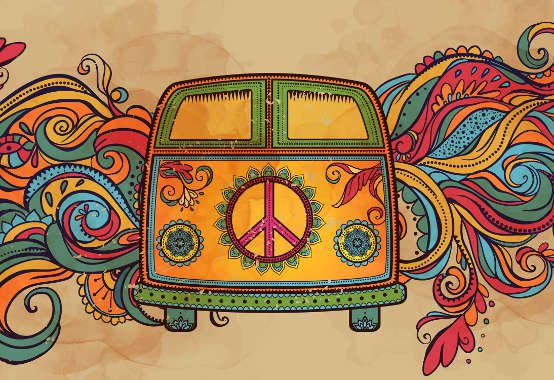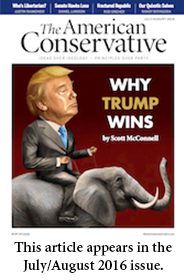How the Culture Wars Began (and Ended)

Just a decade ago, intellectual history was considered an outmoded sub-field of history. The long decline of intellectual history was the result of a deliberate effort by a generation of social historians to push it from the halls of academia—to banish the unfashionable emphasis on the ideas of preeminent Western thinkers. Classifications such as race, class, and gender replaced the study of history as ideas.
By the 1980s, “social history” had morphed into “cultural history,” which borrowed its approach from a host of mid-20th-century anthropologists more interested in symbolism and language than in social structures. But then cultural history struggled to lay firm foundations for the historical profession, as challenges to cultural anthropology became legion by the early 1990s. Gradually, cultural history lost its vogue, as many self-styled “culturalists” began publishing works that mirrored the intellectual histories their dissertation advisors sought to displace decades ago.
This revival of intellectual history would have happened much more slowly had it not been for a group of young scholars who founded a blog for U.S. intellectual history in 2007. This new generation—writing on the internet about their field, free from the constraints of traditional academic publishing—discovered so many enthusiasts within the ranks of the professoriate that they hosted an inaugural Society for U.S. Intellectual History Conference just two years after the launch of their “USIH” blog.
One of the founders of the Society for U.S. Intellectual History (S-USIH) is Illinois State University historian Andrew Hartman. His first book—Education and the Cold War: The Battle for the American School—was a consideration of how the politics of the Cold War fueled fierce public debates about the nature of education in the face of communism. Building on that monograph, Hartman broadened his research and has now written one of the first comprehensive looks at the culture wars of the 1980s and 1990s.
In A War for the Soul of America Hartman argues that the late 20th century’s cultural conflicts were born out of the tumultuous 1960s. To most observers this might not seem a particularly provocative thesis, but recent literature, as Hartman shows, has tried to downplay the radicalism of the ’60s by demonstrating that this era was also a period of great growth for conservative ideas. Where Hartman diverges from this view of a more moderate or balanced 1960s is in claiming that these years universalized “fracture,” thus setting up a wide plane of debate between the left and right that grew to a fever pitch decades later.
Hartman positions A War for the Soul of America against three other books that speak to the culture wars. The first is What’s the Matter with Kansas? by the left-wing journalist Thomas Frank. Hartman eschews Frank’s approach to the culture wars, which dismisses most conservatives as voters who betray themselves by supporting politicians who oppose their economic well-being. Hartman has somewhat more sympathy with the view taken by sociologist James Davison Hunter in his 1991 volume Culture Wars: The Struggle to Define America. Hartman believes that Hunter’s thesis of a secular-religious split in American life still holds some truth—but history reveals more complexity than Hunter’s work admits.
The final text that Hartman engages is Daniel Rodgers’s Age of Fracture, which serves as both an influence and another point of departure. Rodgers’s 2011 book made “fracture” a catchword for intellectual historians looking to explain the impossibility of a common cultural language in the late 20th century. His thesis in Age of Fracture is that unfettered markets made consensus impossible, as all language was boiled down into smaller units, leading personal identity to become more important than institutions.
Hartman observes that fracture became evident in the 1960s as the White Anglo-Saxon Protestant consensus disintegrated. And according to him, “The culture wars were the defining metaphor for the late-twentieth-century United States.” He begins the story in the 1960s, with New Left radicals who challenged the idea of “normative” America. Opponents of the New Left included former Leninists and socialists who became neoconservative intellectuals, along with familiar conservative political figures such as Ronald Reagan and Richard Nixon.
What helped to make the culture wars a decades-long feature of American life, Hartman argues, is that the affluent radicals of the New Left took over higher education precisely during its period of greatest growth. The concept of normative America then fell away as the “identity-based movements of the sixties offered the promise of cultural liberation to those on the outside of traditional America looking in.”
As the culture wars heated up, conservatism enjoyed resurgent popularity at the ballot box. Hartman does not see this as a steady rise to power of the traditional right following Barry Goldwater’s loss in 1964. Instead, a mixture of neoconservatism and an innovative embrace of white working-class values gave the Republican Party new resonance with voters. The neoconservatives benefited from their Marxist background, as they understood the difference between New Left’s politics and the consensus liberalism that the right had been fighting all along. They showed how what remained of consensus liberalism could now be claimed by the right as an ally against the New Left “counterculture.”
Hartman, although primarily interested in the intellectual side of things, convincingly draws connections between ideas and events throughout the book. In his second chapter he moves adeptly between the novels of Saul Bellow, the Moynihan Report, and the Ocean Hill-Brownsville crisis—in which a Brooklyn teachers’ strike led to flaring racial hostility between blacks and Jews—in revealing how neoconservatives and the New Left created the dialectic that we know as the culture wars.
After setting the stage in his first two chapters, Hartman details the clash between left and right in the next seven chapters, each of which is a historiography of disputes that defined the culture wars. Subjects include debates about race, religion, gender, art, school curriculums, and history, with close examination of key episodes such as the right’s outcry against Andres Serrano’s “Piss Christ” exhibition funded by the National Endowment for the Arts—and therefore by taxpayers.
But what stands out about A War for the Soul of America is the trajectory that Hartman traces. For him the 1950s were indeed normative America, grounded in white middle-class mores, and efforts to reveal a radicalized society in the United States before the 1960s are a fruitless endeavor. (A significant body of scholarship disputes this: the late historian Alan Petigny, for example, argued persuasively in his 2009 book, The Permissive Society: America, 1941-1965, that the country was already giving way to loosened moral standards in the 1950s, with the pedagogy of Benjamin Spock, the art of Jackson Pollock, and the music of jazz musician Charlie Parker.) And paired with Hartman’s revisionist historiographical claim about the continued importance of the ’60s as the beginning of fracture for normative America—a point on which conservatives are likely to agree with him—is his belief that the metaphor of the culture wars is dead.
 “The logic of the culture wars has been exhausted. The metaphor has run its course,” Hartman writes in the conclusion. Possibly this is true, as the baby boomers who have so long supplied the defining metaphors of American politics give way to a generation that sees the world differently. Yet it seems that the rising generation is quite comfortable with many of the old metaphors, even if they are tired of using them.
“The logic of the culture wars has been exhausted. The metaphor has run its course,” Hartman writes in the conclusion. Possibly this is true, as the baby boomers who have so long supplied the defining metaphors of American politics give way to a generation that sees the world differently. Yet it seems that the rising generation is quite comfortable with many of the old metaphors, even if they are tired of using them.
Conservatives may dismiss A War for the Soul of America as the work of a left-leaning scholar despairing of the lost paradise promised by ’60s radicals. But Hartman is insightful on the working out of global capitalism and something he calls “the cultural contradictions of liberation,” in which the appearance of choice is often the negation of cherished values—whether those of the left or right. The ensuing historical ironies abound in Hartman’s account, encompassing such examples as the Christian corporate raider or liberal homeschooling parents.
While the culture wars inspired a great deal of farcical, eschatological rhetoric, they also brought about an era of public discourse between left and right that is worth remembering, perhaps even imitating. Surely Henry Louis Gates Jr. and Allan Bloom, for example, communicated something remarkable to us about the soul of America. In the retelling of this conversation, Hartman proves to be both an outstanding historian and a public intellectual mapping the terrain for a new conversation. Compared to this era of the hashtag presidency, we have reason to envy those bygone decades in which political debate appeared on the pages of print newspapers and mass-marketed books.
Seth J. Bartee teaches intellectual history at East Tennessee State University.
Comments